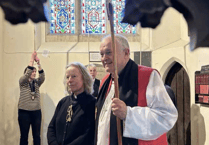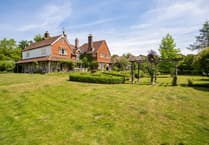DUNSFOLD Aerodrome – the ‘Home of the Harrier’ – has lost the airman who helped to make the airfield famous.
One of Britain’s most distinguished test pilots, Duncan Simpson OBE, who made the first flight in the revolutionary jump jet prototype in 1962, has died aged 89.
The first set of tethered hovering flights took place at the aerodrome in October 1960, with Bill Bedford at the controls.
Mr Simpson was special guest at the airfield in 2010, when two Harrier GR9 jump jets paid a final visit to celebrate the 50th anniversary of the pioneering aircraft’s first vertical take-off there.
The landmark event had added significance because it was also the last operational visit by the jump jet fighter to its original launch pad.
The iconic Harrier was axed in defence cuts in October 2010 in favour of the US-built Joint Strike Fighter.
Mr Simpson said at the time: “I feel very sad we will no longer have the Harrier. It is still such a flexible aeroplane and I don’t think that’s fully understood even now.
“I feel this is a big mistake. It’s unique and is still used all over the world.
“The Harrier now has more equipment than we ever dreamed of, but it is still the basic plane that flew from Dunsfold 50 years ago,” said Mr Simpson, from Guildford.
The ex-RAF fighter pilot became a production test pilot on the Hunter, before becoming more involved in development work in the pioneering programme that resulted in the Harrier and was made chief test pilot.
He retired from test flying in 1978 but continued to make a major contribution to the aviation world and was awarded the Guild Award of Honour in 2011 for his outstanding lifetime contribution to aviation.
Dunsfold Park chief executive Jim McAllister said: “All of us were and continue to be immensely proud of Duncan’s association with the aerodrome and his incredible achievements here.
“We feel privileged to have met and had the opportunity to chat to him about his life and career, especially his reflections on his time here at Dunsfold.
“Our new commercial development has been named the Duncan Simpson Buildings, which we think is a fitting gesture and a lasting memorial to Duncan’s time here and we are pleased he was not only aware of this, but delighted to accept the tribute.”




